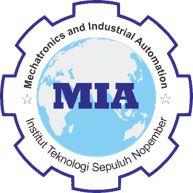21 Bar Yoshimin Boiler Maintenance with Controlling Residual Phosphate
Abstract
Keywords
Full Text:
PDFReferences
A. Mariajayaprakash and T. Senthilvelan, “Failure detection and optimization of sugar mill boiler using FMEA and Taguchi method,” Eng. Fail. Anal., vol. 30, pp. 17–26, 2013, doi: 10.1016/j.engfailanal.2012.12.010.
E. M. Goldratt and E. M. Goldratt, “Chapter 21,” Crit. Chain, pp. 203–207, 2018, doi: 10.4324/9781351218986-21.
W. Beyne, S. Lecompte, B. Ameel, D. Daenens, M. Van Belleghem, and M. De Paepe, “Dynamic and steady state performance model of fire tube boilers with different turn boxes,” Appl. Therm. Eng., vol. 149, no. September 2018, pp. 1454–1462, 2019, doi: 10.1016/j.applthermaleng.2018.09.103.
E. E. Molinet, Water in Cane Sugar Mills, Its Uses, Care and Treatment for Boiler Feed. Elsevier B.V., 2013.
B. Dong, Y. Xu, S. Jiang, and X. Dai, “Effect of reusing the advanced-softened, silica-rich, oilfield-produced water (ASOW) on finned tubes in steam-injection boiler,” Desalination, vol. 372, pp. 17–25, 2015, doi: 10.1016/j.desal.2015.06.015.
K. K. K. Kurita, Kurita Handbook of Water Treatment second english ed. Tokyo: Kurita Water Industries, 1985.
C. A. Duarte, E. Espejo, and J. C. Martinez, “Failure analysis of the wall tubes of a water-tube boiler,” Eng. Fail. Anal., vol. 79, no. January, pp. 704–713, 2017, doi: 10.1016/j.engfailanal.2017.05.032.
DOI: http://dx.doi.org/10.12962%2Fj23378557.v6i3.a8117
Refbacks
- There are currently no refbacks.
This work is licensed under a Creative Commons Attribution 4.0 International License. IPTEK The Journal of Engineering published by Pusat Publikasi Ilmiah, Institut Teknologi Sepuluh Nopember.
Please contact us for order or further information at: email: iptek.joe[at]gmail.com Fax/Telp: 031 5992945. Editorial Office Address: Pusat Riset Building 6th floor, ITS Campus, Sukolilo, Surabaya 60111, Indonesia.








